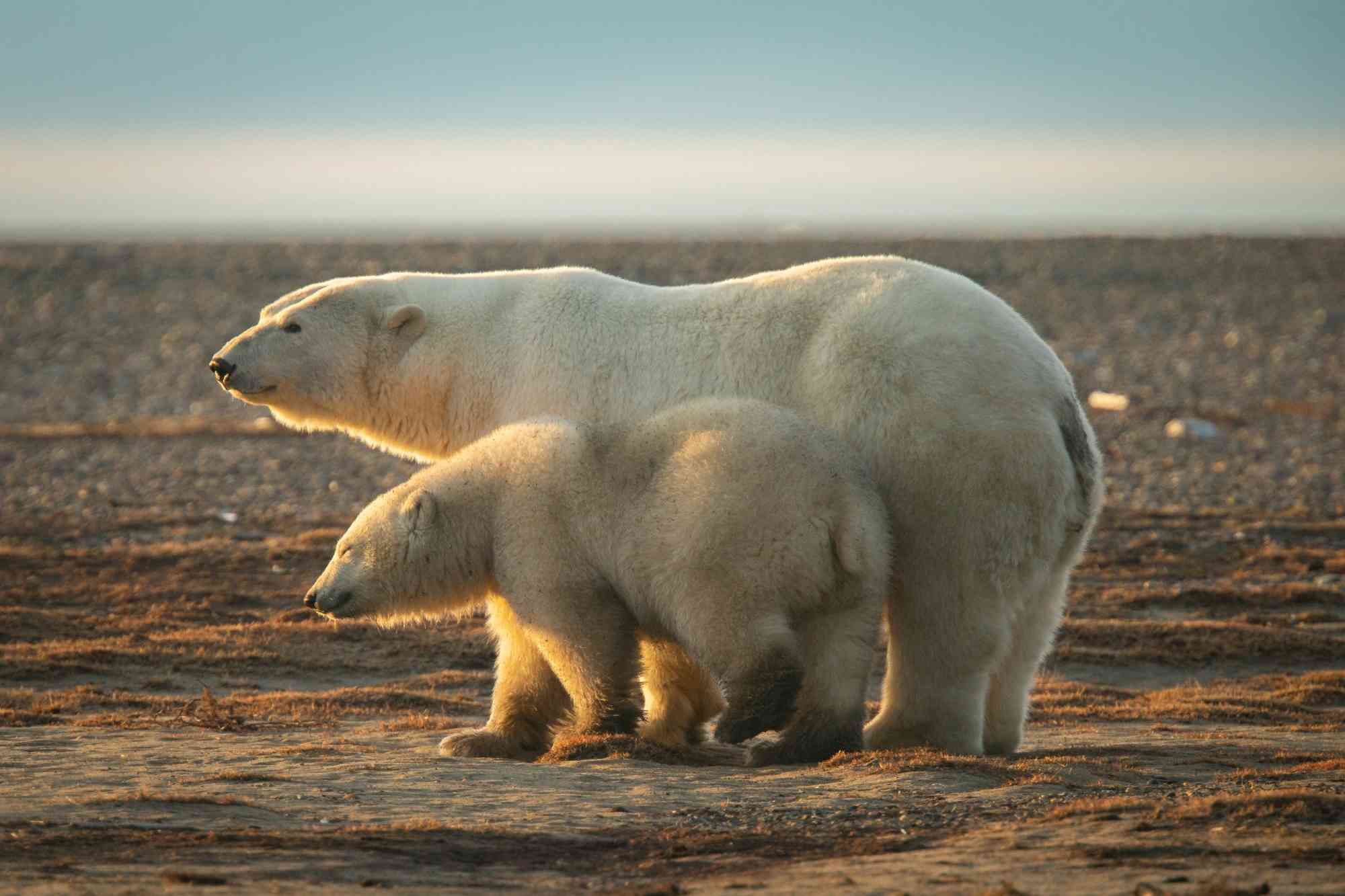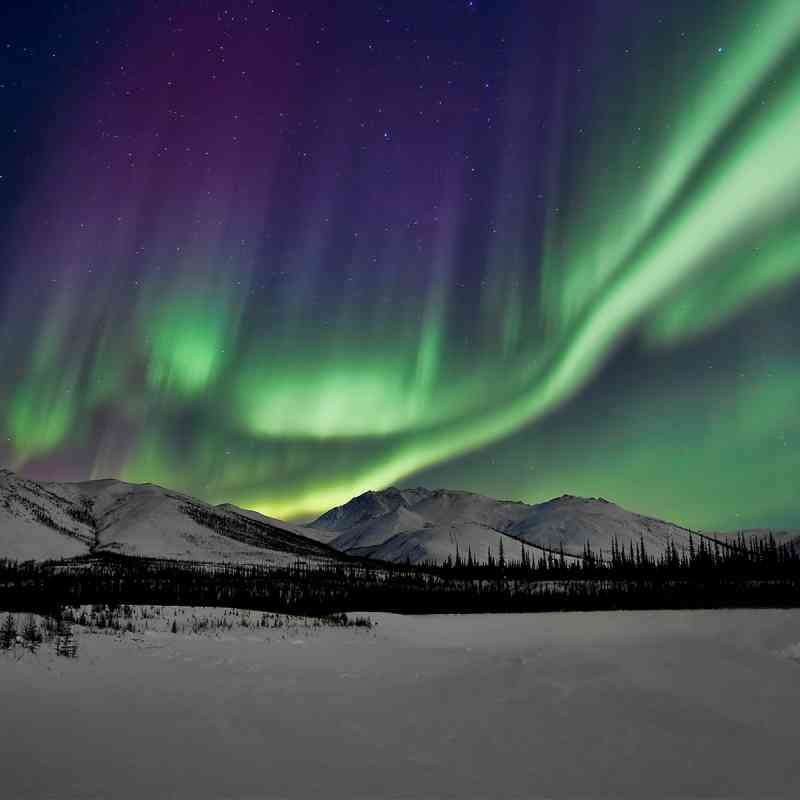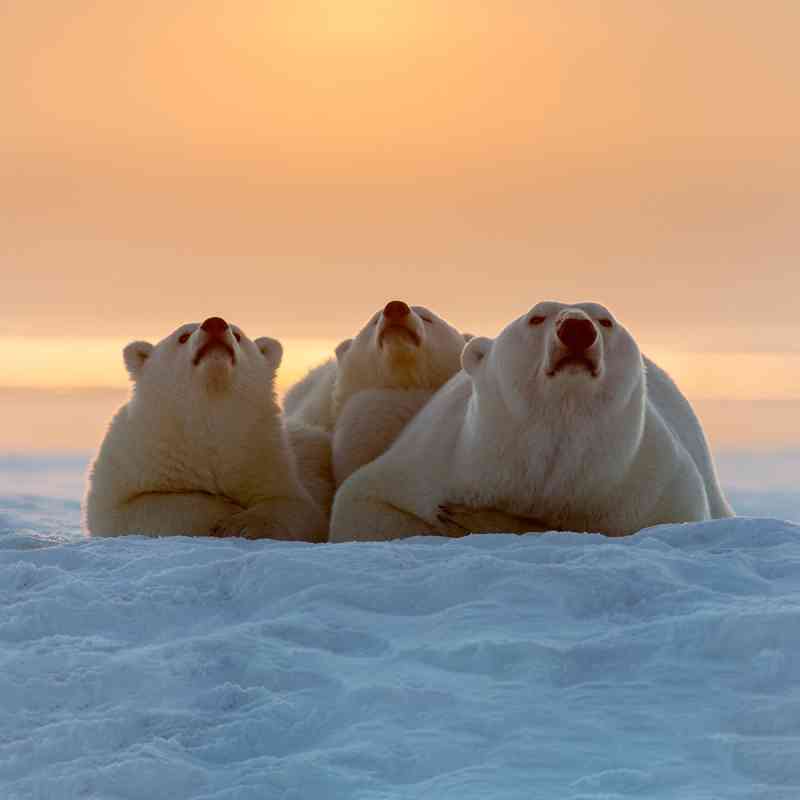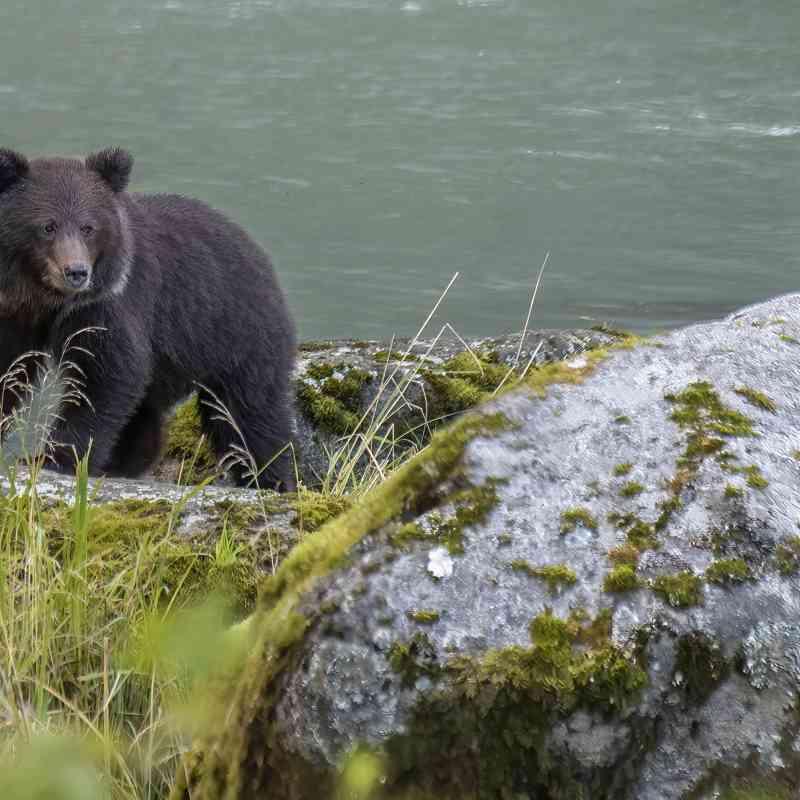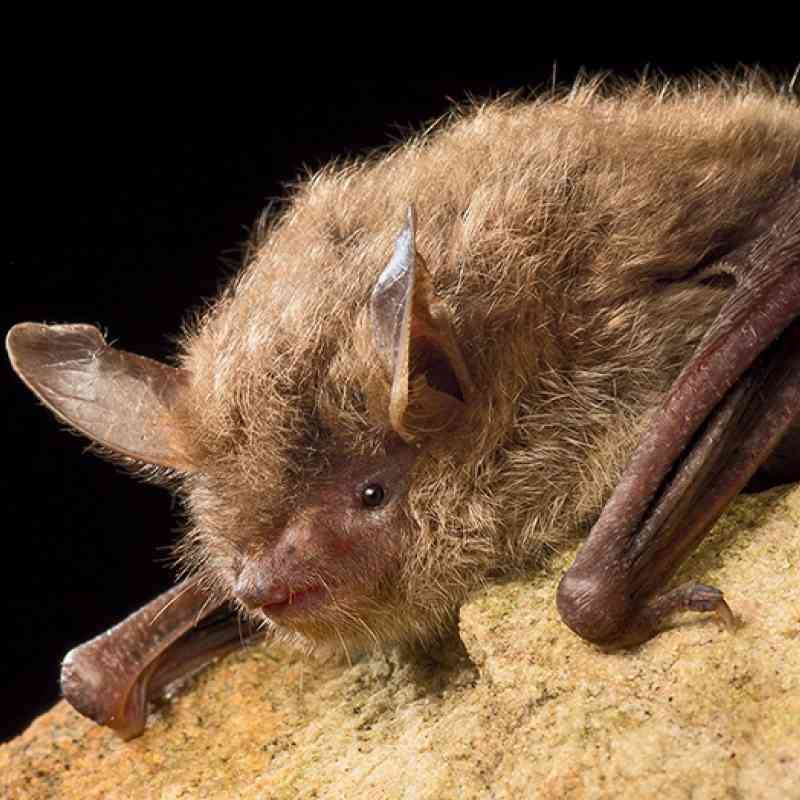The U.S. Court of Appeals for the Ninth Circuit rejected a U.S. Fish and Wildlife Service finding that oil and gas activities in Alaska pose no significant risk of injury or death to polar bears.
This finding underpinned a Service regulation authorizing the oil and gas industry to “harass” hundreds of polar bears over five years on Alaska’s North Slope. The Service found that this harassment could only disturb, and not injure or kill, polar bears. But the agency’s own science demonstrated a 95% risk of polar bear injuries or deaths due to industry activities over the five years. Represented by Trustees for Alaska, Defenders and several partner organizations challenged this regulation in 2021.
“Today’s decision underscores what we have been saying for years: the Service must be vigilant to ensure the survival and recovery of this iconic and irreplaceable population of polar bears,” said Nicole Whittington-Evans, senior director of Alaska programs for Defenders of Wildlife. “Oil and gas activities are inherently dangerous to polar bears and injuries to this magnificent species as a result are likely inevitable.”
“If you took all the Beaufort Sea Polar bears to a Anchorage Wolverines hockey game, their entire population wouldn't even fill the home-team section since there are fewer than 900 of these polar bears left,” said Nicole Schmitt, executive director of Alaska Wildlife Alliance. “Each bear, especially the sows and cubs, are incredibly important to keeping this population afloat. We are grateful that the court agreed with our findings that Service must provide a scientific explanation to justify this incidental take program and are confident that Fish and Wildlife Service will agree with the science and find this incidental take program is completely unwarranted."
The Marine Mammal Protection Act prohibits unauthorized harassment of marine mammal populations like polar bears. A narrow exception to this prohibition allows Fish and Wildlife Service to authorize an unintentional “take” of small numbers of marine mammals for five years or less if it will have a negligible impact on the population. These authorizations are called “incidental take regulations,” where the term “take” means to harass or injure bears.
In Tuesday’s ruling, the court found that Fish and Wildlife Service can’t invent subcategories of polar bear “take” that cause injuries without acknowledging that those injuries could occur. It also found that the agency failed to evaluate the cumulative impacts of five years of oil and gas activities on polar bears by attempting to look at each year in isolation and concluding that oil activities would cause a negligible impact on the population. This violated the Marine Mammal Protection Act’s plain language, which requires the agency to consider the “total” take that the agency is authorizing. The court upheld some portions of the agency’s analysis, and orders the agency to address these legal issues promptly, but it does not vacate the rule.
“It’s great news that the Ninth Circuit held that Fish and Wildlife Service’s regulations were legally flawed,” said Bridget Psarianos, attorney with Trustees for Alaska. “The agency’s failure to consider the highly probable death and deadly injury to polar bear cubs not only violated the law’s plain language, but it goes against the intent of the MMPA itself. The law’s entire purpose is to protect marine mammals like polar bears from harmful human activities. We will continue doing everything we can to protect polar bears in an already vulnerable population impacted by the climate crisis and industrialization.”
The regulation allows oil and gas companies to harass polar bears while carrying out broad and intensive industrial activities for five years, starting in 2021. Harassment can include scaring bears off with noise, equipment and vehicles, and can compel the animals to delay or stop feeding, hunting, tending young, interacting with other bears, and generally focusing on survival. The regulation gives the okay to oil operators to harass bears in ways that compel the animals to delay or stop feeding, hunting, tending young, interacting with other bears, and generally focusing on survival. This harassment can include scaring bears off with noise, equipment, and vehicles, and disrupting polar bear denning or feeding.
For denning cubs, who are weak and need time in their dens with their mothers, this harassment can be fatal. Fish and Wildlife Service’s own science showed a 95 percent probability that the North Slope’s oil and gas activities will be lethal to polar bears over the regulation’s five-year period. The failure to consider this high probability was one of the legal problems identified by the court in yesterday’s ruling.
The administration issued the regulation after Alaska Oil and Gas Association asked the Fish and Wildlife Service to allow oil and gas operators in Alaska to harass polar bears and walruses along the Beaufort Sea coast and on the North Slope.
The law firm Trustees for Alaska filed the lawsuit on behalf of seven groups and represents five clients in the case: the Alaska Wildlife Alliance, Alaska Wilderness League, Defenders of Wildlife, Environment America, and the Sierra Club, which also represents itself. Trustees is co-counseling with Sierra Club’s Environmental Law Program, and the Center for Biological Diversity, which represents itself and Friends of the Earth.
“If Alaska’s polar bears are going to have a chance to survive the climate crisis, the threat posed by oil and gas industrialization in their habitat must be thoughtfully quantified and addressed,” said Andy Moderow, Senior Director of Policy for Alaska Wilderness League. “We are grateful that the court saw errors in the agency’s past analysis, and we look forward to the agency addressing those errors in the months to come, so that a fact-based, protective policy can be implemented for polar bears in America’s Arctic.”
“We are pleased with the court’s decision,” said Hallie Templeton, legal director for Friends of the Earth. “Fish and Wildlife Service is being sent back to the drawing board to recalculate important factors that could make-or-break the struggling polar bear population on the North Slope. We will keep a close watch on the next iteration of these regulations and will keep fighting to ensure that Alaska’s wildlife stands a fighting chance against Big Oil.”
"We need to ensure that polar bears have a future on this planet," said Steve Blackledge, senior director of conservation campaigns for Environment America. "We're pleased to see a court ruling that recognized flaws in a regulation that gave too much leeway to oil drilling and too few protections for these bears."
“We need stronger protections to truly protect these highly imperiled polar bears, but at least this ruling forces federal officials to take a closer look at the harm oil and gas extraction inflicts on this magnificent species,” said Julie Teel Simmonds, a senior attorney at the Center for Biological Diversity. “Polar bears already face existential threats from human-caused climate change. The oil industry's direct disruption of their ability to rear cubs in the Arctic pushes polar bears closer to extinction.”
“The court’s decision properly calls the Service out for refusing to consider the extremely high overall probability of lethal injury to newborn cubs from five years of activities like onshore seismic surveys,” said Sierra Club Senior Attorney Karimah Schoenhut. “The Service can’t undermine the stringent requirements of the Marine Mammal Protection Act by segmenting its analysis.”
Contacts:
Nicole Schmitt, executive director of the Alaska Wildlife Alliance, nicole@akwildlife.org, 907-917-9453
Jacqueline Covey, communications specialist with Defenders of Wildlife, JCovey@defenders.org, 630-427-7164
Steve Blackledge, Environment America, sblackledge@environmentamerica.org, 916-952-3224
Brittany Miller, press officer, Friends of the Earth, bmiller@foe.org, 202-222-0746
Julie Teel Simmonds, Center for Biological Diversity, (619) 990-2999, jteelsimmonds@biologicaldiversity.org
Ian Brinkley, Sierra Club, ian.brickey@sierraclub.org, 202-675-6270
Dawnell Smith, communications director, Trustees for Alaska, dsmith@trustees.org, 907-433-2013
Defenders of Wildlife is celebrating 75 years of protecting all native animals and plants in their natural communities. With a nationwide network of nearly 2.2 million members and activists, Defenders of Wildlife is a leading advocate for innovative solutions to safeguard our wildlife heritage for generations to come. For more information, visit defenders.org/newsroom and follow us on Twitter @Defenders.
